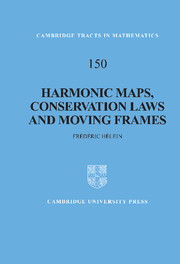Introduction
Published online by Cambridge University Press: 13 August 2009
Summary
The contemplation of the atlas of an airline company always offers us something puzzling: the trajectories of the airplanes look curved, which goes against our basic intuition, according to which the shortest path is a straight line. One of the reasons for this paradox is nothing but a simple geometrical fact: on the one hand our earth is round and on the other hand the shortest path on a sphere is an arc of great circle: a curve whose projection on a geographical map rarely coincides with a straight line. Actually, choosing the trajectories of airplanes is a simple illustration of a classical variational problem in differential geometry: finding the geodesic curves on a surface, namely paths on this surface with minimal lengths.
Using water and soap we can experiment an analogous situation, but where the former path is now replaced by a soap film, and for the surface of the earth — which was the ambient space for the above example — we substitute our 3-dimensional space. Indeed we can think of the soap film as an excellent approximation of some ideal elastic matter, infinitely extensible, and whose equilibrium position (the one with lowest energy) would be either to shrink to one point or to cover the least area. Thus such a film adopts a minimizing position: it does not minimize the length but the area of the surface. Here is another classical variational problem, the study of minimal surfaces.
- Type
- Chapter
- Information
- Harmonic Maps, Conservation Laws and Moving Frames , pp. xiii - xxiPublisher: Cambridge University PressPrint publication year: 2002

